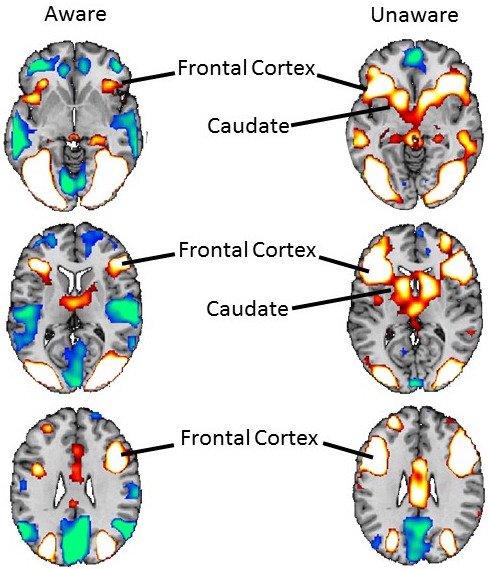Spider phobia brain 'processes unconscious fear'
- Published

Showing arachnophobes images of spiders so briefly they remain unaware of them could help them overcome their fear, US researchers suggest.
Scans suggested the brain worked harder to regulate emotional and behavioural responses to fear when it was not conscious of it.
The women in the small study were shown pictures of flowers interspersed very briefly with images of spiders.
The researchers said the technique could be used to treat children.
Current treatments are often based on persuading patients to directly face their fear, which could cause serious emotional distress, they said.
A phobia is an irrational fear of an object, place, situation, feeling or animal.
Phobias are more pronounced than fears, and can become overwhelming and affect day-to-day life.
They are particularly common in women.
For the research, 21 young women with a phobia of spiders were shown images of spiders for a split second in between image of flowers.
They were then shown spider images for a longer time, so that they were clearly visible.

At the same time, their brain activity was monitored and compared with that of women with no phobias.
In the group with phobias, seeing the spider images very briefly resulted in strong activity in areas of the brain that regulate emotional and behavioural responses to fear.
This was unexpected and resulted in the level of fear actually experienced being reduced, the researchers said.
In contrast, when women with phobias were exposed to clear images of spiders for a longer time, the brain was unable to control its response to fear, causing them to experience the full force of their phobia.
'Not consciously aware'
Paul Siegel, lead author of the study and associate professor of psychology at Purchase College of the State University of New York, said: "Counter-intuitively, our study showed that the brain is better able to process feared stimuli when they are presented without conscious awareness.
"Our findings suggest that phobic people may be better prepared to face their fears if at first they are not consciously aware that they've faced them."
Dr Bradley Peterson, director of the Institute for the Developing Mind at Children's Hospital Los Angeles, said the technique could be a useful approach for treating children who could suffer significant distress if confronted head on by what was causing their phobia.
The study is published in Human Brain Mapping.
The 10 most common phobias in the UK are:
social phobia - fear of interacting with other people
agoraphobia - fear of open public spaces
emetophobia - fear of vomiting
erythrophobia - fear of blushing
driving phobia - fear of driving
hypochondria - fear of illness
aerophobia - fear of flying
arachnophobia - fear of spiders
zoophobia - fear of animals
claustrophobia - fear of confined spaces
NHS Choices says some simple phobias can be treated through gradual exposure to the object, animal, place or situation that causes fear and anxiety.
But treating complex phobias, such as agoraphobia, can take longer and require counselling, talking therapies or psychotherapy.
Nicky Lidbetter, from charity Anxiety UK,, external said the current treatment approach for this type of specific phobia was cognitive behavioural therapy (CBT).
"This approach aims to replace the fear response of a phobia with a relaxation response, through gradual exposure to the phobia inducing stimulus."
- Published22 November 2016

- Published27 November 2015

- Published28 January 2016
